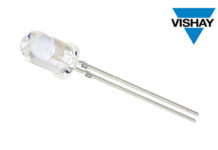
“Raw talent is exist no matter what you do with that person” quotes Krishnan Srinivasan, Managing Director of the fast growing semiconductor fab-rication equipment maker Lam Research India, when this writer asked about India engineering is not only about IITs.
Lets talk about 6 nm width transistor, it has just 30 silicon atoms. So if you are a semiconductor equipment designer, you need to design your equipment to alter the silicon or some other semiconductor material using some atomic level altering material processing machines.
Lam Research success in India speaks about availability of semiconductor equipment talent for deep node chip equipment development.
In an exclusive interaction at Lam Research India office in Bengaluru, K. Srinivasan explained to this writer, the technology and business connections driving the high end semiconductor fab-rication technology.
K. Srinivasan: The most fundamental macro-economic trend what we call knowledge economy, which to me represents development of generation of knowledge. If you look at that- then you can narrow down, that drives our system integrators to develop products and today the main thrust is on enterprise computing. With that you also have mobility revolution, the third element of this is interconnectedness of different things wearables. These are all the macroeconomic trends. Lam Research is driven along Moore’s Law progress, another element is to propagate/ democratise technology, to put it in as many hands as possible. There’s a huge opportunity in this subcontinent ( India). This will also lead to other underserved areas in the world such as Africa. All these places can leapfrog in development, that is a mobility revolution.
Not just 7nm..
K. Srinivasan: There is also Internet connected wearables, Internet of things, smart machines, driverless cars. Devices (semiconductor) require for some of these application need not be 7 nm, they can be 65 nm 90 nm made chips.
Latest progress in deep node:
K. Srinivasan: When it comes to high-performance computing, 10 nm getting into production and is followed by 7 nm, and 5 nm is emerging driven by Moore’s law. At 7 nm node, there is enormous opportunities in what we call multiple patterning, where Lam Research supplies atomic layer deposition equipment for etching. Lam Research is a preferred vendor in this area.
Interconnect challenges:
K. Srinivasan: The traditional copper interconnect technology has electromigration problems, there are opportunities looking for alternatives, and there are variety of other metals to replace copper, something like cobalt and many other alternatives can be used. The problem with the copper is the high current density in the extremely small sized copper interconnect make it to dislocate physically, causing defect to chip. And all noble metals such as gold and silver are poison to the device, even copper usage carefully managed.
Memory semiconductor fab equipment trends:
Going back to the mobility revolution, one of the important thing is memory capacity, Lam Research is a leader in depositing silicon oxide and nitride layers to form three-dimensional stacking of memory cells. They also supply equipment to deposit metal on each layer such as tungsten deposition equipment, where Lam Research equipment address challenges of placing metal in narrow and deep structures. Here they use atomic deposition instead of CVD. 3-D NAND flash memory is a product made out of using advanced semiconductor equipment made from Lam Research. Lam Research is also collaborating in developing advanced memory technologies such as a MRAM, phase change memory, and RRAM.
On India chip fab:
K. Srinivasan: India doesn’t have a very large semiconductor manufacturing facilities. We are hoping that some semiconductor fab will come up in India, but unfortunately things are not progressing that well.
On Indian operations:
K. Srinivasan: In India Lam has 560 employees, about 340 of those are employed in hardware engineering, about 120 employed in software engineering, about 50-60 employed in manufacturing team. In this 2/3 of is mechanical engineering, and the balance is electrical engineering and little bit of chemical engineering. Lam Research has both direct employees, contract employees from services companies. Lam Research collaborate with Indian Institute of Science, Lam Research hires talent not only from IITs but also from regional engineering colleges, wherever good talent is available.
Semiconductor fab is not really electronics:
K. Srinivasan: Semiconductor manufacturing is essentially machine tool (mechanical engineering) company but of high-tech, a lot of work they do is mechanical and electrical engineering, which actually have reactors. I need to have automation to bring work piece into the reactor, once it is inside the chamber, we have to heat it and cool it, flow gases, flow liquids, these are all mechanical engineering. We also use chemical engineering, because of chemical processes involved. It also requires electrical engineering to control motors, flows, instruments and temperature controllers, valve controllers. The software is required to control all these processes in computerised environment.
Since majority of the semiconductor fabs are in Asia, Lam Research’ semiconductor fab support team in India can easily fly to Taiwan, South Korea, Japan, Singapore and China, where world’s top semiconductor foundries Such as TSMC, Globalfoundries, and Samsung and many more have their semiconductor IC chip manufacturing Plants.
Source: http://www.eeherald.com/















